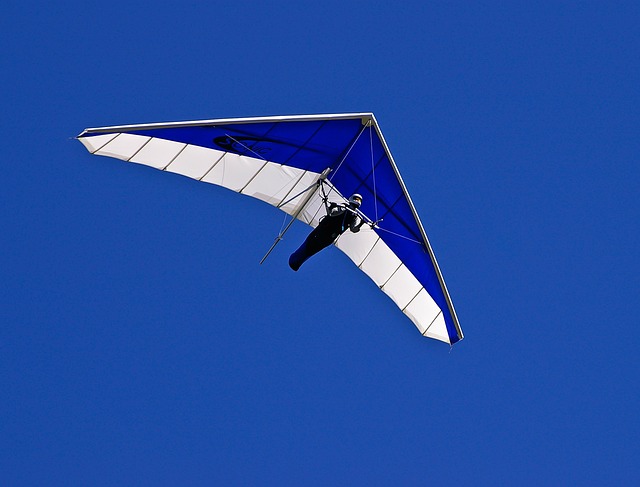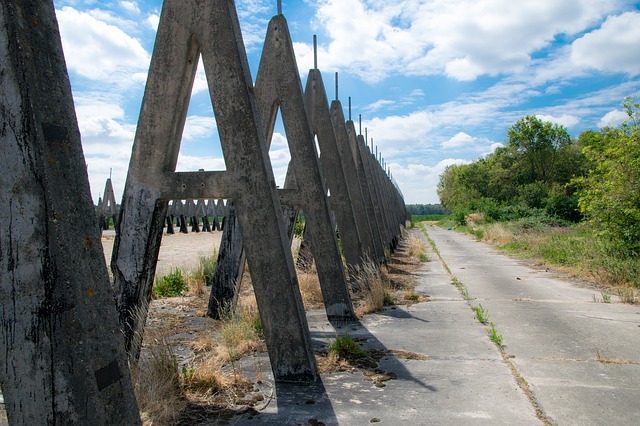
20 December 1986: A self-built glider was to take the passionate hang-glider pilot from Fahrland to West Berlin, six kilometres away. The escape plan fails: The 37-year-old is arrested and sentenced to two years and ten months in prison.
Thirty-two years ago this evening, a 37-year-old hang-glider pilot attempted to fly from Fahrland (now Brandenburg) with a homemade glider to the then West-Berlin to get over the Berlin Wall. Unfortunately, he does not arrive in Berlin. Orientation difficulties and the cold wind force the trained toolmaker back to the ground. There he is finally arrested.
Later on, the Stasi staff were seen with a curious and smug air in the courtyard of the Potsdam prison on Lindenstraße (today the Lindenstraße 54/55 memorial), https://de.wikipedia.org/wiki/Gedenkstätte_Lindenstraße_54/55) of him demonstrating his flying machine. Three years before the “fall of the Wall”, the man then sat in pre-trial detention here. Later he was sent to the Berlin remand centre in Kissingenstraße in Berlin-Pankow. He was then sentenced to two years and ten months in prison. But he was lucky. Erich Honecker’s visit to Bonn resulted in an amnesty in the GDR. So he was released after only four months.
A kite flight itself would certainly also be dangerous from the perspective of young people today. But being locked up for it is rather unimaginable?
Building kites in the GDR was not that easy. After all, it requires a light fabric that is in turn impermeable to air. Such a thing did not exist as a matter of course. At first, plastic foil was used, stretched over wooden slats. Most of the hang-gliders came from the districts of Magdeburg, Halle and Erfurt. These all bordered the former Federal Republic. Nevertheless, the idea of flight is said not to have been at the forefront of the practice of the sport at all.
The German thriller “BALLON” by Michael Herbig has been available since September this year. It is based on the authentic story of two families from Thuringia fleeing to West Germany across the inner-German border in a hot air balloon. The film tells a very beautiful story about life in the GDR. The people live in orderly conditions, those who do not want to flee do not feel uncomfortable but have come to terms with the circumstances. But those who wanted to test the limits of heaven in the GDR, who perhaps simply set themselves higher sporting goals than the political conditions at the time allowed, lived dangerously.
Hang gliding was a sport that, like gliding, could be practised sporadically within the framework of the Gesellschaft für Sport und Technik (GST). In the Eastern Bloc, for example in Hungary, international hang-gliding championships were even organised. Nevertheless, the GDR security forces were rather suspicious of hang-gliders. From this side, the sport received little or no support. The aforementioned hot air balloon flight in 1979 was a success story and, as Michael Herbig surely remembered, it was made very famous by the media even then. In the United States, a film was immediately made about the story. (https://de.wikipedia.org/wiki/Mit_dem_Wind_nach_Westen).

The Society for Sport and Technology (GST) organised the pre-military lessons in the GDR, and not for nothing! The lessons in the 9th grade at the Polytechnische Oberschule (POS) included a 14-day stay, usually in the summer, in a so-called Military camp. The same was true for the few young people who took the Abitur at the so-called Erweiterten Oberschulen (EOS). In the 11th grade, the young men had to pass the Military Camp obligatory. Anyone who pledged to become an officer in the NVA at the Abitur was a Officer applicants and could take his HGV driving licence in parallel with his school lessons. This was a very special privilege because it saved on driving school, which was very expensive in the GDR, as it is today. All this happened under the auspices of the GST.
Special sports such as gliding or hang gliding were also based here. This had the advantage, especially with the possibilities of escaping near the inner-German borders with the flying machines, of keeping a close eye on the sportsmen.
Again, these special sports awakened a sense of elitism in young people. Within the egalitarian GDR society, there were few opportunities to stand out from the crowd. Among the admired heroes was certainly Sigmund Jähn. In 1978, he was the first German to fly into space. In doing so, he tested the limits of the sky in a very special way. There is hardly any comparison to hang-gliding, but the feeling of freedom and heroism was naturally awakened by it. These days, German astronaut Alexander Gerst is making his way back to Earth from the ISS space station after a stay of several months. He is certainly no hang-glider and never had the idea of fleeing towards the GDR across the inner-German border. But, like the many refugees from the Wall, he is breaking down borders and is thus a role model for everyone.



